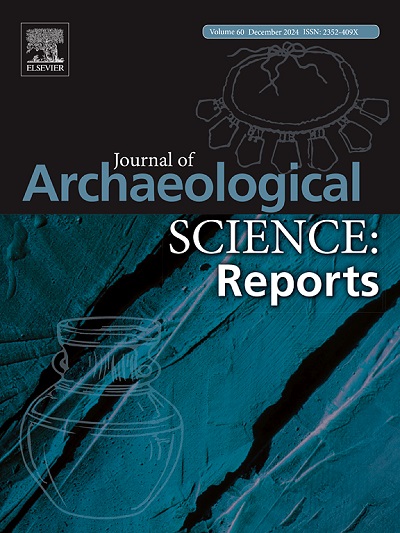MicroCT-based dental age estimation: Method comparison of the London Atlas and regression equations for deciduous and permanent teeth applied on central European infants of the 19th century
IF 1.5
2区 历史学
0 ARCHAEOLOGY
引用次数: 0
Abstract
Introduction
Tooth mineralisation and alveolar eruption show a strong temporal correlation with the chronological age of sub-adults and thus represent a valuable asset for age estimation in archaeology and forensic science. Despite the vast number of various dental age estimation methods published, evidence-based comparison of their degree of accuracy is lacking.
This study aimed (1) to evaluate if µCT scans are a reliable alternative to conventional techniques for tooth length measurements and (2) to compare the accuracy and reliability of the London Atlas of Tooth Development and Eruption with six well-established regression methods for age estimation of subadults.
Material and Methods
Forty-two skulls of a Central European osteological collection of the early 19th century (known age at death 7 months in utero–11 years) were scanned with µCT to estimate dental age via London Atlas-classification and regression equations based on deciduous and permanent tooth length measurements.
Results
Tooth length measurements via µCT proved to be a technically feasible method with an excellent agreement with caliper measurements.Regression equations of Liversidge (1993) and Cardoso (2019) for the deciduous dentition and London atlas yielded the most accurate age estimates (prediction errors: 0.20–0.30 years). Regression equations for permanent teeth were less accurate; however, performance was improved when their application was restricted to individuals ≤ 3 years of age. Most accurate age estimates for single teeth were achieved for deciduous incisors, canines and first molars.
Discussion
µCT extends the spectrum of tools available for tooth length assessment. While regression equations for deciduous teeth represent a reliable age estimation method for younger individuals, the London Atlas outperforms the regression equations for permanent teeth. It thus can be considered a preferred alternative to estimate age in older individuals (>3 years) with an adequate state of conservation. A higher weighting of the first mineralising deciduous teeth can contribute to further improving the accuracy of the London Atlas.
求助全文
约1分钟内获得全文
求助全文
来源期刊

Journal of Archaeological Science-Reports
ARCHAEOLOGY-
CiteScore
3.10
自引率
12.50%
发文量
405
期刊介绍:
Journal of Archaeological Science: Reports is aimed at archaeologists and scientists engaged with the application of scientific techniques and methodologies to all areas of archaeology. The journal focuses on the results of the application of scientific methods to archaeological problems and debates. It will provide a forum for reviews and scientific debate of issues in scientific archaeology and their impact in the wider subject. Journal of Archaeological Science: Reports will publish papers of excellent archaeological science, with regional or wider interest. This will include case studies, reviews and short papers where an established scientific technique sheds light on archaeological questions and debates.
 求助内容:
求助内容: 应助结果提醒方式:
应助结果提醒方式:


